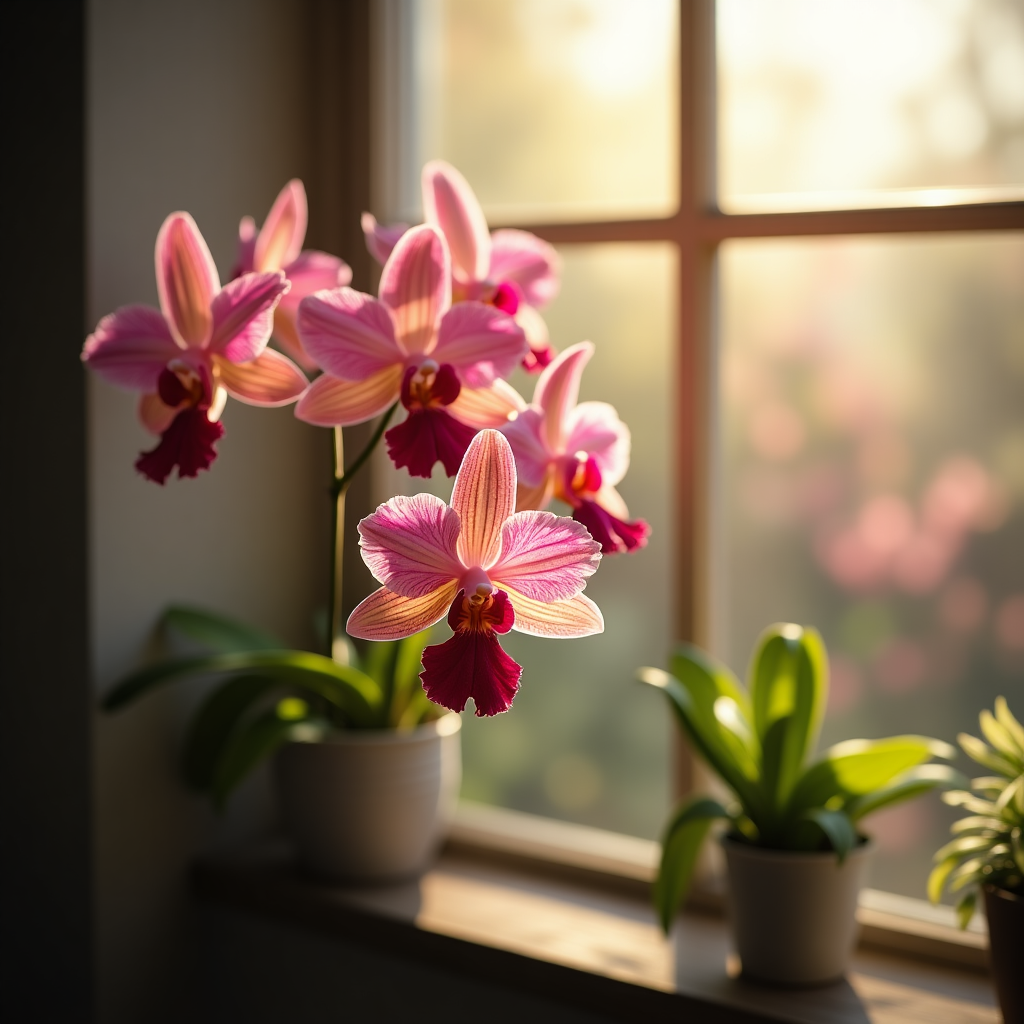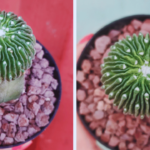Cattleya orchids, often hailed as the “Queen of Orchids,” have captivated plant enthusiasts around the world with their striking beauty and vibrant colors. Renowned for their large, fragrant blooms, these orchids have earned a special place in both horticulture and the hearts of those who cherish exotic flora. Whether you’re a seasoned orchid grower or a budding enthusiast, understanding the intricacies of Cattleya orchids can transform your gardening experience into a journey of beauty and discovery.
What Makes Cattleya Orchids Unique?

Cattleya orchids are distinguished by their elegant, show-stopping flowers that come in a dazzling array of colors—from pure white and soft pinks to deep purples and brilliant yellows. Their unique lip structure, often embellished with contrasting hues, sets them apart from other orchid varieties. This distinctive appearance not only makes them highly desirable for collectors but also symbolizes luxury and sophistication in the floral world.
Historical Background of Cattleya Orchids
The story of Cattleya orchids dates back to the early 19th century when European botanists first discovered these exotic plants in the tropical regions of South America. Their introduction to the Western world sparked a craze, and soon, Cattleya orchids became a symbol of opulence in Victorian horticulture. Today, these orchids continue to thrive both in nature and in carefully maintained indoor gardens, representing a blend of tradition and modern botanical artistry.
Botanical Characteristics
Understanding the botanical features of Cattleya orchids is essential for anyone interested in their cultivation.
Physical Features
Cattleya orchids boast pseudobulbs—thickened stems that store water and nutrients, ensuring the plant’s survival during drier periods. Their long, slender leaves are typically a deep green, providing a lush backdrop to the spectacular flowers. These orchids’ growth habits are elegant and practical, making them well-suited for display in decorative pots or mounted on bark for a more natural presentation.
Flower Structure and Colors
One of the most fascinating aspects of Cattleya orchids is their elaborate flower structure. The blooms feature a prominent lip (labellum), which often contrasts sharply with the rest of the petals and sepals. This design not only enhances their aesthetic appeal but also plays a crucial role in attracting pollinators. With colors that range from soft pastels to vivid neons, the versatility in their appearance is a major factor in their popularity among orchid aficionados.
Growing and Caring for Cattleya Orchids

Growing Cattleya orchids successfully requires attention to detail and a commitment to replicating their natural habitat as closely as possible.
Ideal Growing Conditions
To flourish, Cattleya orchids need a balance of warmth, light, and humidity.
Light Requirements
These orchids thrive in bright, indirect sunlight. Placing them near a window with filtered light can help simulate the dappled sunlight they would receive in their native tropical environments. Direct sunlight should be avoided as it may scorch the delicate leaves and flowers.
Temperature and Humidity
Cattleya orchids prefer warm temperatures, ideally between 65°F and 80°F (18°C-27°C) during the day. At night, cooler temperatures are beneficial. Humidity levels should be maintained between 50% and 70%. In drier climates, using a humidity tray or a room humidifier can make a significant difference in their overall health.
Soil and Potting Techniques
Choosing the right growing medium is crucial. Unlike many other plants, orchids do not thrive in traditional soil. Instead, a well-draining mix of bark, perlite, and charcoal is ideal. This mix ensures that the roots remain aerated and are not waterlogged, which can lead to root rot. Repotting should be done every one to two years, preferably after the blooming period, to refresh the growing medium and allow the roots to expand.
Propagation and Maintenance
Propagation is an important aspect of caring for Cattleya orchids, whether you are looking to expand your collection or share their beauty with friends.
Methods of Propagation
The most common method of propagating Cattleya orchids is through division. When the plant has developed multiple pseudobulbs, you can carefully separate them and replant each section in its own container. Another method is through keiki propagation, where small plantlets grow on the flower spike. These keikis can eventually be separated and grown independently once they have developed sufficient roots.
Fertilization and Watering Practices
Cattleya orchids benefit from a balanced fertilizer that is specifically formulated for orchids. It’s best to fertilize them every two weeks during the growing season and reduce the frequency during the dormant period. Watering should be done thoroughly but infrequently, allowing the potting medium to dry out slightly between waterings. Overwatering is one of the most common mistakes and can lead to fungal infections and root rot.
Common Challenges and How to Overcome Them
Even experienced growers encounter challenges when nurturing Cattleya orchids. Being aware of these issues can help you prevent problems before they start.
Pests and Diseases
Cattleya orchids can be susceptible to pests such as aphids, mealybugs, and scale insects. Regularly inspecting your plants and cleaning the leaves can help deter infestations. If pests are detected, use a gentle insecticidal soap or neem oil to control them. Additionally, fungal infections and bacterial diseases can occur if the orchids are kept in overly damp conditions. Maintaining proper air circulation and using a well-draining medium are key preventive measures.
Environmental Stress Factors
Environmental stress can manifest in several ways. Insufficient light, improper watering, and extreme temperatures can cause the leaves to yellow or drop, and the plant may fail to bloom. Stress can also lead to a condition known as “bud blast,” where the buds fall off before flowering. Monitoring environmental conditions closely and adjusting care routines as needed is vital to keeping your orchid healthy and vibrant.
The Role of Cattleya Orchids in Culture and Economy
Cattleya orchids are not just a horticultural delight; they have significant cultural and economic importance as well.
Symbolism and Cultural Significance
For many, Cattleya orchids represent beauty, elegance, and refinement. They have long been used as a symbol in art and literature, often associated with love and luxury. In some cultures, gifting a Cattleya orchid is seen as a gesture of admiration and respect, making it a popular choice for weddings, anniversaries, and other special occasions.
Commercial and Horticultural Importance
In the commercial world, Cattleya orchids are highly valued for their ornamental appeal. They are often featured in floral arrangements, decorative displays, and even used in high-end interior design projects. Orchid exhibitions and shows around the world frequently highlight Cattleya varieties, contributing to the global horticultural market. This commercial interest has spurred further research into cultivation techniques and hybridization, ensuring that these orchids remain at the forefront of botanical innovation.
Tips and Tricks for Orchid Enthusiasts

Whether you’re just starting out or you’re an experienced grower, these practical tips can help you get the most out of your Cattleya orchids.
Expert Advice for Beginners
- Start with a Healthy Plant: Always begin with a plant that shows no signs of disease or stress. Look for vibrant leaves and a sturdy root system.
- Invest in the Right Tools: A good quality orchid potting mix, a balanced fertilizer, and appropriate watering equipment can make a big difference.
- Learn the Basics: Understand the natural habitat of Cattleya orchids. Replicating their native environment as closely as possible will help them thrive.
- Be Patient: Orchids are known for their slow growth. It might take time before you see significant blooms, so patience is key.
Advanced Care for Experienced Growers
For those who have mastered the basics, advanced care techniques can further enhance the beauty and longevity of your Cattleya orchids. Experiment with different potting mediums and consider using organic fertilizers to promote robust growth. Regularly prune dead or damaged parts of the plant to encourage new growth. Advanced growers may also explore the benefits of controlled-environment growing, using tools like automated misting systems and LED grow lights to precisely manage their orchids’ environment.
Exploring the Beauty of Cattleya Hybrids
Hybridization has allowed orchid enthusiasts to develop new varieties of Cattleya orchids that exhibit unique colors, patterns, and increased resilience. These hybrids often combine the best traits of their parent species, making them a popular choice for both collectors and commercial growers. The process of hybridization requires careful selection and breeding, and many growers take pride in nurturing a plant from seed to a stunning, blooming masterpiece.
The Science Behind Orchid Fragrance
One of the most enchanting features of Cattleya orchids is their fragrance. Research suggests that the scent of these orchids is a complex blend of volatile compounds designed to attract specific pollinators. This natural perfume not only enhances their appeal in the wild but also makes them a favorite among indoor gardeners who enjoy the subtle aroma as part of their living space.
Integrating Cattleya Orchids into Your Home Decor
Orchids, and Cattleya orchids in particular, can transform any room into a vibrant, living gallery. Their elegant blooms and lush foliage serve as natural artwork. Consider placing them in decorative pots or mounting them on driftwood to create a striking focal point in your home. The versatility of their aesthetic allows them to blend seamlessly with modern, rustic, or classic decor styles.
Sustainable Practices in Orchid Cultivation
Sustainability is an important consideration for modern gardeners. Many orchid enthusiasts are adopting eco-friendly practices, such as using organic fertilizers, recycling potting media, and employing water-saving techniques. These practices not only benefit the environment but also promote healthier, more resilient plants. By focusing on sustainability, you contribute to the preservation of these magnificent orchids for future generations.
Global Orchid Shows and Competitions
Orchid shows and competitions provide a platform for enthusiasts to display their prized Cattleya orchids. These events celebrate the art and science of orchid cultivation and offer opportunities for growers to exchange tips, techniques, and innovations. Competitions often include categories for both native species and hybrids, reflecting the diversity and creativity within the orchid community.
How to Troubleshoot Common Problems
Even with the best care, challenges can arise. Here are some troubleshooting tips for common issues:
- Leaf Discoloration: Check for overwatering or nutrient deficiencies. Adjust your watering schedule and consider a balanced fertilizer.
- Lack of Bloom: Ensure your orchid is receiving adequate light and is in the correct potting medium. A slight stress period can sometimes trigger blooming.
- Pest Infestations: Isolate affected plants and treat with appropriate insecticides or natural remedies like neem oil.
Conclusion
Cattleya orchids remain a symbol of beauty, resilience, and elegance in the plant world. From their historical roots to their modern-day cultivation, these stunning blooms continue to inspire both novice gardeners and seasoned horticulturists alike. With the right care and a little bit of patience, anyone can enjoy the captivating allure of these orchids in their home or garden. Embrace the journey of nurturing Cattleya orchids, and you will be rewarded with a living masterpiece that brings joy and sophistication to your surroundings.
FAQs
- What is the ideal environment for growing Cattleya orchids?
Cattleya orchids thrive in bright, indirect sunlight, warm temperatures between 65°F and 80°F, and moderate humidity levels of 50% to 70%. - How often should I water my Cattleya orchid?
Watering should be done thoroughly but infrequently, allowing the potting medium to dry slightly between waterings to prevent root rot. - Can I grow Cattleya orchids indoors?
Yes, with proper care and by replicating their natural tropical conditions, Cattleya orchids can thrive indoors. - What are common pests that affect Cattleya orchids, and how can I manage them?
Common pests include aphids, mealybugs, and scale insects. Regular inspection and treatment with insecticidal soap or neem oil can effectively manage these pests. - How can I encourage my Cattleya orchid to bloom more frequently?
Ensure the plant receives adequate light, maintain proper humidity and temperature levels, and provide balanced fertilization. Occasionally, a slight period of stress, such as reduced watering, can also encourage blooming.







